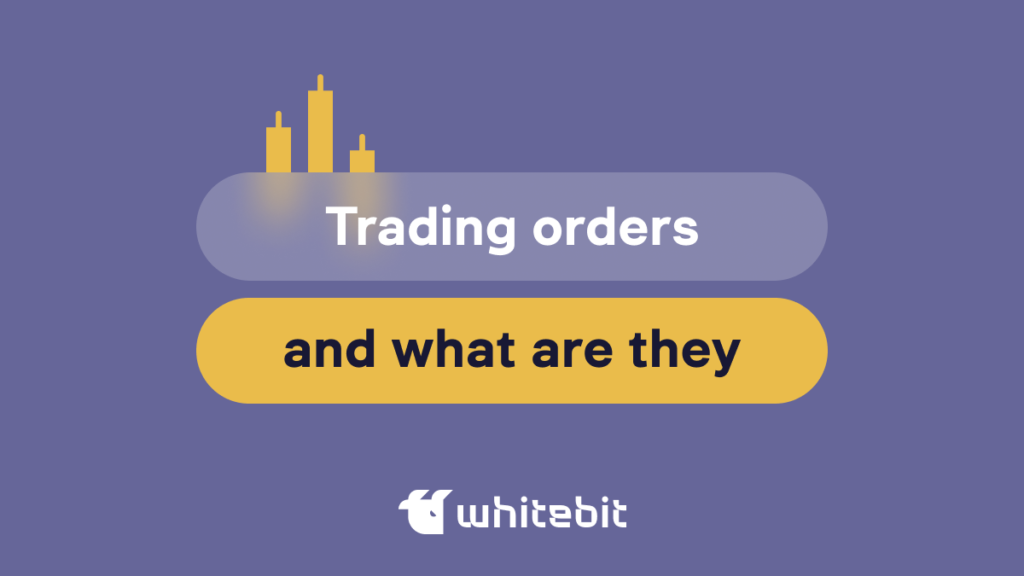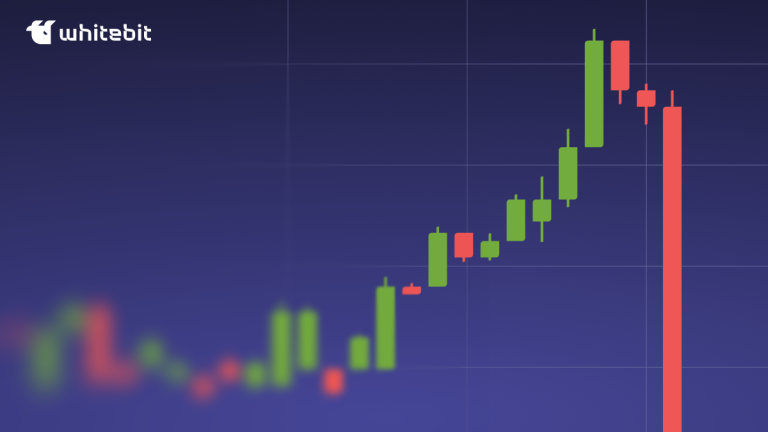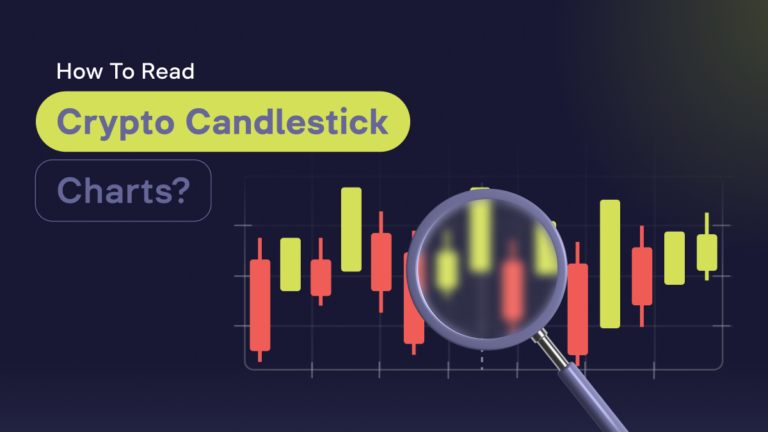What is an order? Trading order types on the exchange

At first, order types may seem tricky, especially for newcomers to crypto. But once you understand how they work, they’ll be your foundation for successful trading and smarter decisions.
On WhiteBIT, you have six types of orders to choose from:
- Market;
- Limit;
- Stop-limit;
- Stop-market;
- Multi-limit;
Each order serves a unique purpose for different market scenarios. Master them, and your trading will go to the next level! Let’s dive into each one and see when and how to use them.
The main order types
Market order
A market order is a type of order that allows you to buy or sell an asset at the current market price. The major benefit is that the transaction happens immediately, but the price at which it’s executed may differ from what you anticipated, especially when the market is moving fast.
With a market order, you specify the quantity of the asset you wish to trade, and the price is determined automatically by the market. The order is executed as soon as possible at the best price available at that moment.
Advantages:
- Immediate execution: Great for executing trades when speed matters most;
- No delays: Your order is filled without hesitation.
Disadvantages:
- Uncertainty in price: You have no control over the price at which the trade is executed;
- Not ideal for large transactions: If liquidity is low, large orders may not be filled at your expected price.
Limit order
Think of a limit order as your way of setting boundaries in the market. You choose the price at which you’re willing to buy or sell, and the trade will only happen if the market hits that price or better. However, if the price doesn’t reach your set level, the order might not be filled.
A limit order is your defense against price slippage, especially when the market is moving rapidly.
By placing a limit order, you also define both the price and amount of the asset you want to trade. For instance, a buy limit order will only execute if the price is at or below your desired level.
Advantages:
- Ensures execution at your preferred price, avoiding suboptimal trades;
- Great for automating strategies like setting profit targets or limiting losses;
Disadvantages:
- If the market doesn’t hit your price, the order might not be executed.
Stop orders
Stop-market and Stop-limit are the same Market and Limit orders, but with an additional parameter — the stop price.
Stop-market
A stop-market order is an order that automatically executes when the price hits your specified stop level.
The stop level is the price you choose, designed to help you secure profits or minimize losses.
Once the price reaches your stop level, the order triggers and is executed instantly.
A stop-market order is your go-to solution for quick reactions without missing the moment. Set it and let it work while you relax!
Stop-limit
A stop-limit order combines the best of both stop and limit orders, allowing you to set two levels: a stop price and a limit price.
- The stop price is similar to a stop-market order — it triggers when the price reaches your set level, entering the order book. But here’s the key difference: instead of executing the order at market price, the stop-limit order becomes a limit order, meaning you control the price at which the asset is bought or sold!
- The limit price is the exact price you want to buy or sell the asset for.
Advantages:
- Price control: You set the price at which your order will be executed, ensuring you trade at the price you want.
- Volatility protection: Ideal for safeguarding against rapid market shifts, as you set a clear execution limit.
Disadvantages:
- Risk of non-execution: If the market moves too quickly, your order might not be filled if the price doesn’t meet your limit.
- Not ideal for urgent trades: This order type may not work in fast-moving markets where quick execution is needed.
OCO order
OCO (One Cancel the Other) is like double protection for your trades. It allows you to place two orders at the same time: a Limit and a Stop-limit. The best part is that once one order is triggered, the other is automatically canceled.
For instance, you can set two orders to buy or sell an asset. One order can be a Take-profit at a higher price, and the other a Stop-loss at a lower price. If the price rises and hits your Take-profit level, the sell order will execute, and the buy order will automatically cancel. Similarly, if the price drops and hits your Stop-loss level, the sell order will execute, and the buy order will be automatically canceled.
Advantages:
- OCO orders allow you to set profit targets while minimizing risk;
- They help automate your trading strategy, reducing emotional influence on your decisions.
Disadvantages:
- May not execute if the market price doesn’t hit your specified levels;
- In highly volatile markets, maintaining accurate Take-profit and Stop-loss levels can be challenging.
Multi-limit order
Multi-limit is a mode that allows you to create a grid of limit orders within a specified price range. Simply set the range, and the system will automatically place orders based on your parameters. It’s the perfect option for those using order distribution strategies who don’t want to manually manage each individual order.
When setting it up, you choose the number of orders you want (from 2 to 15), define the upper and lower price limits, and select the progression type — either arithmetic or geometric. The system will instantly calculate the prices for each order within the range and provide you with a convenient preview.
Advantages:
- Plan multiple orders in advance, reducing the need to constantly monitor the market. This is particularly useful when anticipating high volatility or when you need control over the average entry or exit price of your position.
Disadvantages:
- If the market moves outside the set range, some orders may remain unfilled;
- In conditions of low liquidity, there’s no guarantee that all orders will be filled.
Multi-limit mode is available in spot trading. All your orders are displayed in a separate section, allowing for easy monitoring, editing, or cancellation without affecting other orders in the grid.
How to place or cancel an order?
- Log in to your account on the WhiteBIT AU exchange.
- Visit the “Trade” section in the upper left part of the screen.
- Select the desired trading pair and order type.
- Enter the price and quantity of the asset.
- Click “Buy” or “Sell.”
Done!
If you change your mind and want to cancel an order, head to the “Active Orders” section. Just remember, you can only cancel it before it’s executed.
Before placing an order, evaluate the asset’s liquidity, risks, and opportunities. Now you’re all set to trade. Best of luck with your trading decisions!
FAQ
WhiteBIT AU currently offers Market, Limit, Stop-limit, Stop-market, Multi-limit, and OCO orders. In addition to these types of orders, there are conditional, trailing, hidden, Buy-stop, and Sell-stop orders.
These orders are executed when predetermined conditions are met and are based on the price of the asset being traded. Conditional orders are used to automate trading decisions and manage risk. They allow traders to set their desired entry and exit points in advance and reduce the need for constant market monitoring.
Buy-stop and Sell-stop are two types of conditional orders used to automatically buy or sell assets at a predetermined price.
A trailing order allows traders to automatically adjust their buy or sell orders based on the market price movement. They are designed to enable traders to profit in a rapidly rising market while limiting their potential losses in a falling market.
When traders place a hidden order, it remains private and is not visible to other market participants in the order book. By hiding the order, the trader retains some secrecy and avoids revealing his trading strategy to other market participants.










